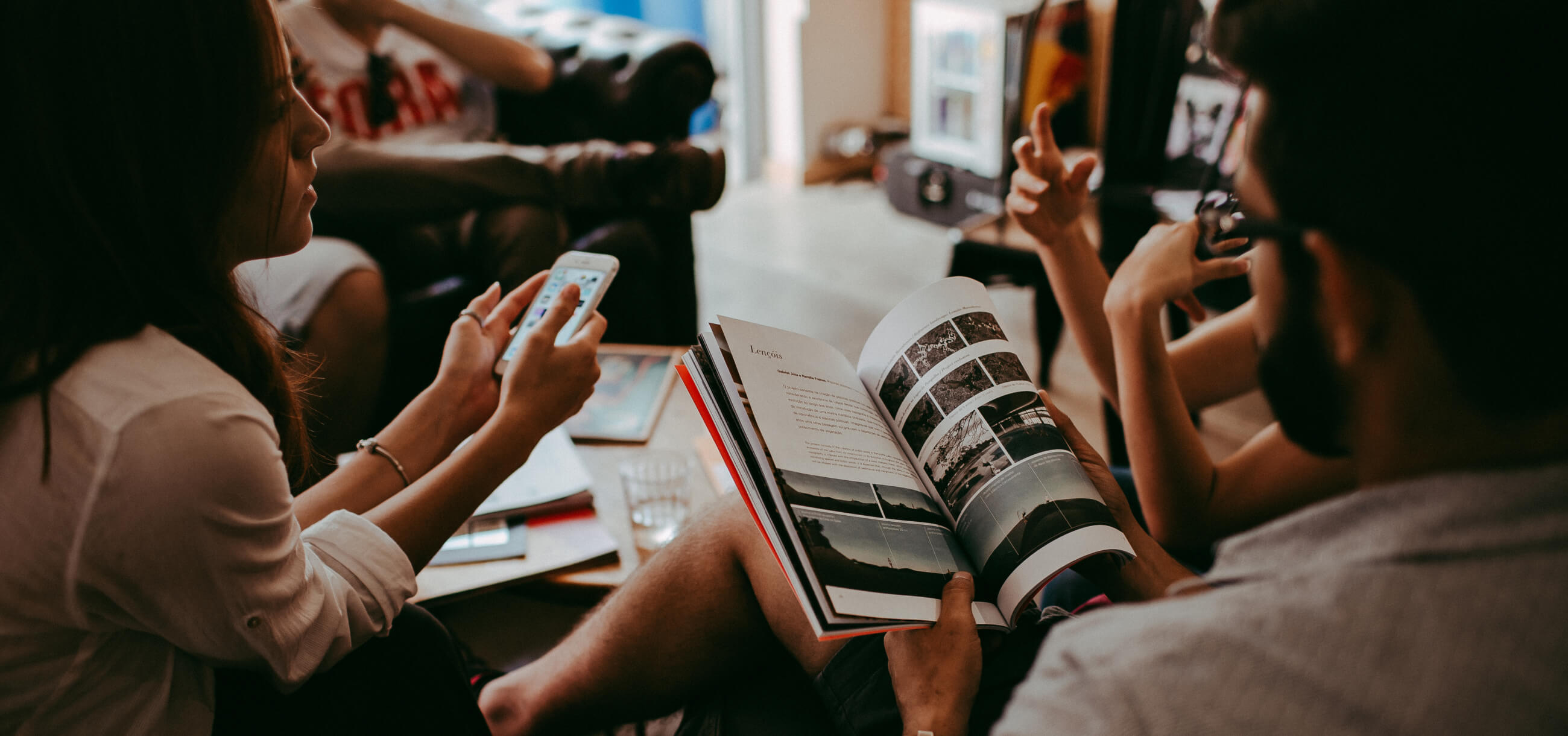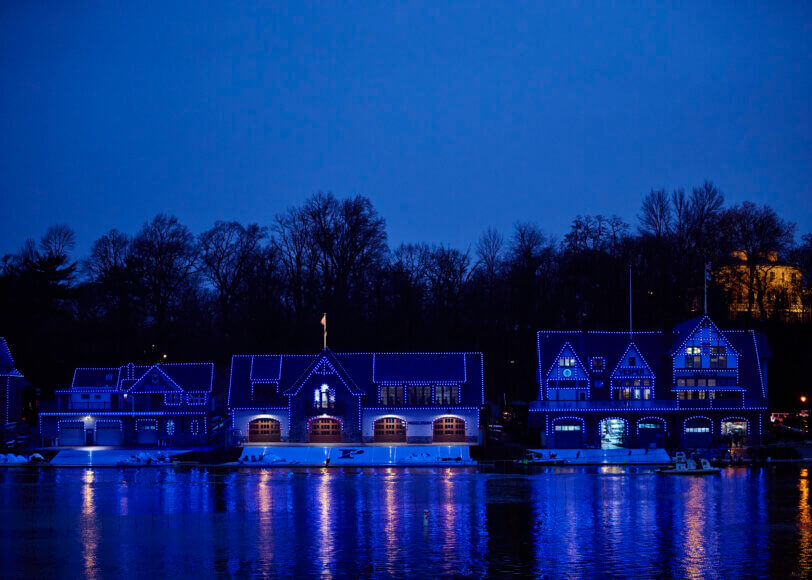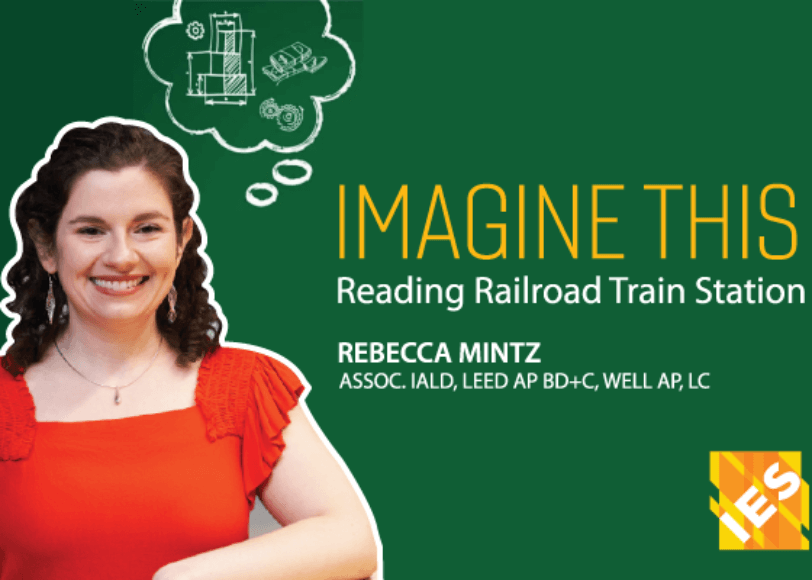Global Meets Local
Hospitality industry rallies with global economy using home-grown appeal
Travel and tourism now comprise one-tenth of the global gross domestic product (GDP). Not coincidentally, projections call for the hotel industry to sustain a 5 to 6 percent annual growth rate in coming years. Both statistics were reported in the recent Deloitte 2018 Travel and Hospitality Industry Outlook. The primary force behind this trend? A strong global economy, validated by an increase in the number of business travelers, rising disposable incomes, and expanded leisure travel.
While the strong economy equates to a rising number of potential guests, success isn’t guaranteed for every hotel, casino or entertainment venue. Alternatives, such as AirBnB’s Homes Around the World and other experiential-based venues, are changing the mix and presenting a new breed of competition. Rivals are incorporating a multitude of features, ranging from unique restaurants, entertainment, retail, and other amenities.
Discriminating consumers are no longer beholden to a specific brand. They research and compare options by location and the unique experience it presents. Preference is often given to settings that align with an individual’s morals, the company’s values, or recommendations from friends and online reviews. Smart rooms, theatre-style entertainment, and other personalized technology soon will likely become mainstream for top-tier hotels.
The opportunity to thrive in the hospitality market is ripe for the taking. Victory, however, will be reserved for those that can develop a unique ambiance and user experience that appeals to mood-based preferences for both social and quiet spaces.
Boutique Builds Brand
Top-tier hotels serve up just what the customer orders
The hospitality industry is thriving. As with any growing market, the competition is stiff and can quickly become saturated. Big name hotels are working diligently to identify and meet changing consumer expectations to ensure their long-term survival and prosperity.
“The biggest trend we are seeing is the creation of a unique experience for guests,” says Pomme Lee, LEED AP, LC, Project Manager with The Lighting Practice. “When customers are enjoying their experience, they are more likely to stay longer, spend more and tell others about it.”
Many times, creating a unique experience translates into incorporating the culture or history of the area. “For instance,” says Lee, “the 300-room Hyatt Centric located in Philadelphia’s historic Rittenhouse Square neighborhood will honor the local Shaker community of the 1800s, with a unique simple minimalist theme.”

The interior designer, Creme Design Inc., drew inspiration from the local Shaker community in the 1800s. The Hyatt Centric in Philadelphia’s design was influenced by the images above.
The Lighting Practice created a cozy and inviting environment by concealing electric light sources and illuminating public and private spaces with warm white light. Modest lighting solutions were used throughout, aligning with the hotel’s Shaker influence.
Caitlin Bucari, Project Manager with The Lighting Practice, who worked on Le Méridien Houston Downtown concurs. The project transformed the 21-story 1950s Melrose Building, the city’s oldest modern skyscraper, into a one-of-a-kind luxury hotel destination. “Inspired by the bold black, white and gray graphics and materials used throughout the hotel, we played with light and shadow to create dramatic spaces,” explained Bucari. This carried through to the hotel’s façade. Le Meridien stands out from the neighboring buildings and beckons to potential patrons with its beacon-like exterior lighting.

The design of the Le Méridien Hotel in Houston, Texas (Beck) was inspired by the bold black, white and gray graphics. Light and shadows create a dramatic and high contrast space.
“Amenities are also big,” adds Lee, “and they can range from mild to wild.” Demand for communal spaces, such as fire pits, shared dining areas, outdoor bars, game zones, and small music venues is clearly on the rise. “We’re often being asked to support the crafting of quiet spaces for individuals to relax and re-energize within that same property,” adds Bucari.
Hotels are responding to their guests’ desires for spaces beyond their private rooms by providing alternate solutions for business travelers and vacationers alike. Communal lounges can provide guests with an opportunity to work remotely, relax in a quiet space, savor cocktail, or peruse a curated selection of local magazines, books, and artifacts.
Hotel restaurants are taking center stage in an effort to woo locals and others not staying in the hotel. “For example, the Le Méridien Houston’s, Oxbow 7 restaurant was purposefully located at street level with full-height windows giving unobstructed views of the stunning interior to attract the attention of passersby. The lighting was designed to highlight rich materials and a colorful mural done by a local artist, creating a trendy, welcoming vibe,” says Bucari.
Going forward, these transformations are expected to trickle down to mid-level hotels. Lighting designers will continue to enhance the architect’s intent for the property, fine-tuning the guest experience, but also play a role in technical innovation, energy efficiency and on-demand flexibility to address varying guest preferences.
Project Spotlight: W Philadelphia and Element Philadelphia Hotel
Philadelphia, Pennsylvania, USA
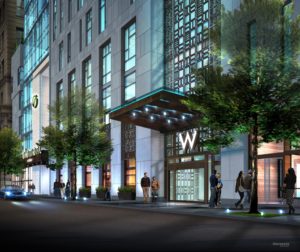
Located inside a 51-story skyscraper, the W Philadelphia and Element Philadelphia Hotel are the first dual-branded hotel development. Two separate entrances from Chestnut Street welcome guests into distinctly branded arrival lobbies, one leading to the 295-room W Philadelphia and one to the 460-room Element Philadelphia. In addition to panoramic city views, the building offers guests a variety of amenities including an outdoor terrace and pool bar, dining and retail, meeting facilities, a spa and gym, parking, and more.
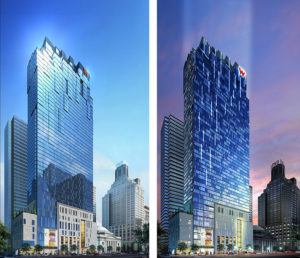
Renderings Courtesy of Cope Linder Architects, A NELSON Brand
The 773,500-SF building’s nighttime lighting has become part of its branding. The Lighting Practice used white LED sources with a DMX512 controller to create a dynamic white sparkle for the building’s crown, which is intended to resemble the cliffs along the Schuylkill River in Fairmont Park. After the Philadelphia Eagles won the 2018 Super Bowl, the owner decided that the system should have color-changing capability to tap into the energy of the city. The hotel will join Philadelphia’s other skyline buildings with colors for special celebrations and seasonal displays. TLP updated the sparkling fixtures to RGBW to give the owner this capability.
Lighting Lessons
One of the owner’s goals for the project was to achieve LEED certification. The owner was initially concerned that an exterior lighting treatment might jeopardize this goal. The Lighting Practice was able to ease the owner’s concern. Based on the site’s Lighting Zone, a percentage of the project’s electric lighting lumens could be dedicated to exterior accents while meeting LEED standards. The team developed several studies to show how those lumens could be most effective on the glass curtainwall building. The result will be a successful and attractive nighttime appearance that complies with LEED requirements.
Slated to open in 2018, the W Philadelphia and Element Philadelphia Hotel will be a lavish addition to Philadelphia’s skyline and the Avenue of the Arts.
Credits
Client: Chestlen Development (Controlled by Brook Lenfest)
Developer: Vine Street Matthews (Matthews Southwest and Vine Street Ventures)
Construction Management: Tutor Perini Affiliates
Architect: Cope Linder Architects (A NELSON Brand); Interior Designer: designstudio ltd; Structural Engineer: O’Donnell & Naccarato; Civil Engineer: Stantec; MEP/FP Engineer: Bala Consulting Engineers; Geotechnical Engineer: McClymont & Rak Geotechnical Engineers, LLC; Lighting Designer: The Lighting Practice




